Hi! Let's figure out together how solar power stations work. It's very interesting!
Imagine a huge field where instead of flowers, there are... solar panels! And above them shines a big, kind Sun.
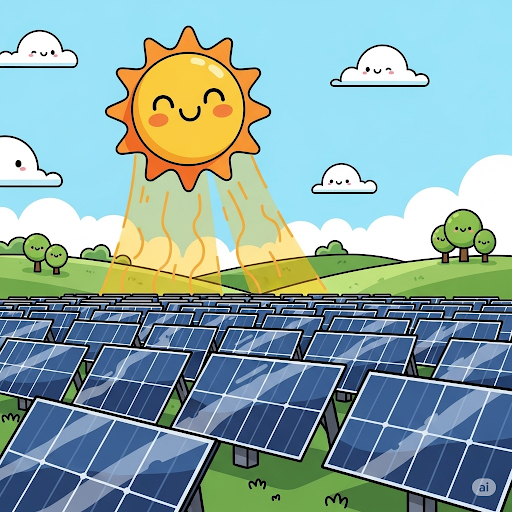
The Sun sends its rays to Earth, which are made of tiny particles called photons. These photons, like little balls, fly to us and hit the solar panels.
So what happens next? Let's look inside a solar panel!
A solar panel is made of a special material, most often silicon. When photons of sunlight hit the panel, they transfer their energy to electrons — even smaller particles inside the silicon.
After getting such a "kick" from a photon, the electrons start to move. And this orderly movement of electrons is an electric current!
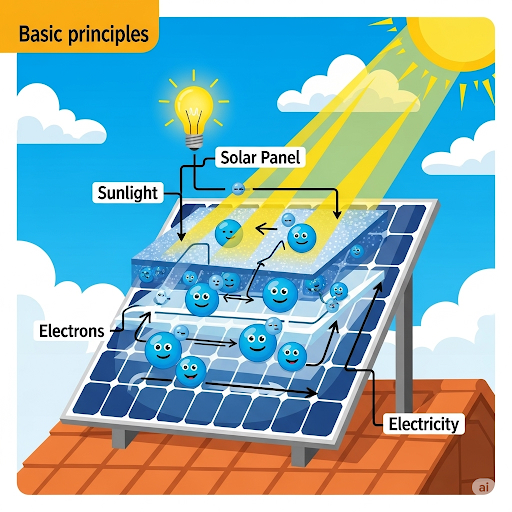
But this current is special; it's called "direct current" (DC). The outlets in our homes, however, use "alternating current" (AC). To convert one to the other, a special device is needed.
This device is called an inverter. It's like a translator, but for electricity. Direct current (DC) from the solar panels goes in, and alternating current (AC) comes out, ready to be used.
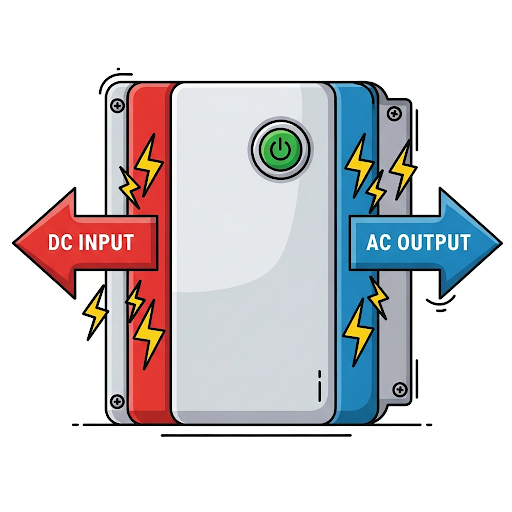
Now that we have the "right" kind of electricity, it can be sent on its way.
From the solar power station, electricity flows through wires, like rivers, to cities and towns. These wires hang on tall towers that you've probably seen.
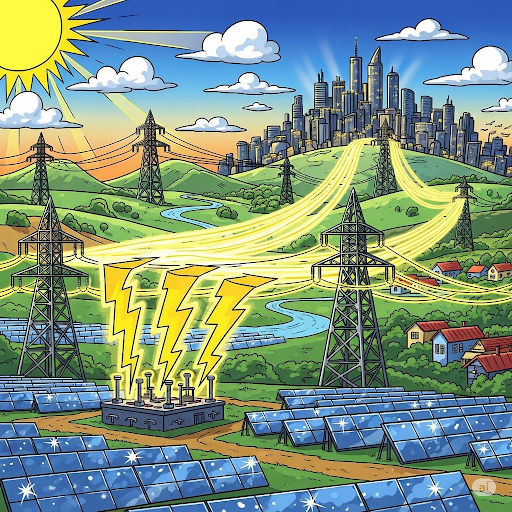
And finally, the electricity reaches our homes!
And here it is, our electricity has arrived home! Now we can turn on the lights, watch TV, play computer games, and charge our phones. And it's all thanks to the sun!
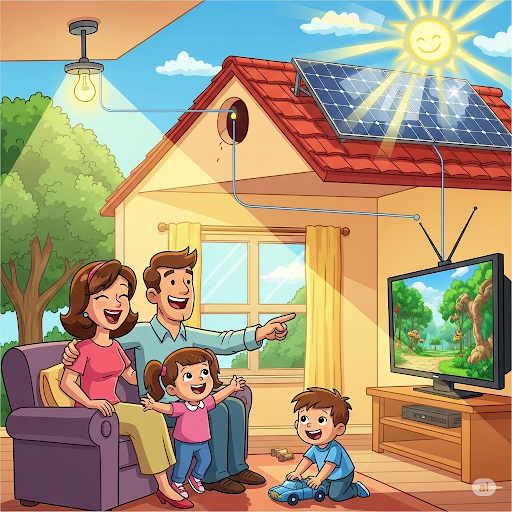
So that's how electricity is made from sunlight. Solar power stations are a great way to get energy without polluting our planet. It's clean and renewable electricity because the Sun will keep shining for a very, very long time!
How a Solar Power Station Works